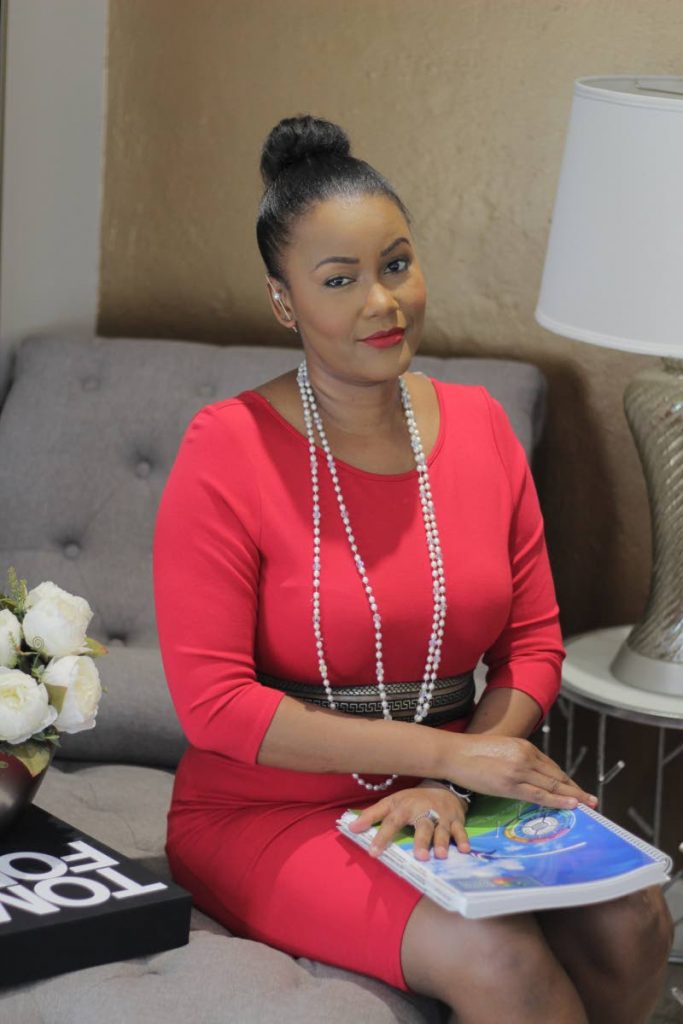Consultant Nichelle Granderson: Pandemic-proof your business's future

Businesses across the Caribbean continue to grapple with the fallout from the dual impact of the pandemic: from the medical implications to the concurrent economic impacts. However, companies in the region had significant challenges with strategic navigation even before the covid19 pandemic. Business consultant Nichelle Granderson, who leads her own firm Strategy Plus (S+) Consulting, shared insights with Business Day on how businesses can find themselves on a better footing during and after this pandemic.
She has done consultancy for companies including Unicomer, iGovTT and the Caricom Secretariat ending more recently in her role as human resources director for the Eastern Caribbean for Digicel.
In her work over the past two decades, she noted that few Caribbean companies invest the needed time for strategy, pointing out, "If you don't know where you are going, all roads will take you there."
She detailed further, “Even companies that have created and are executing on strategy, are doing so having only used strategy 'tools' like SWOT, PESTLE and Logic models. Many companies have workshops or retreats after which strategic plans are rendered, but these are also done without formal training or proven methodologies." And she would know. Her work has covered local private and state-owned enterprises as well as regional and international ones.

What can companies do
The traditional three- to five-year strategic plan may no longer be viable in the today’s world. The World Health Organization (WHO) continues to sound the siren that new coronavirus spreads are possible and hence, more pandemics and more unpredictability in business. Granderson advised that more than a pivot is needed.
"Organisational strategic goals, themes, and objectives must continuously be evaluated and re-evaluated and defined to take into consideration the absolute abstract situation we live in today. Initiatives in support of strategy must inspire true innovation and risk to recover lost streams of revenue but more importantly to develop new sustainable sources of income too," she advises.
According to her work within the global Balanced Scorecard Framework 9 Steps to Success, companies must consider:
1. Assessment – internal and external aspects as well as creating or re-validating strategic elements (vision, mission, values, stakeholder value proposition)
2. Strategy – high-level business strategies garnered from step one at the organisational level.
3. Objectives – objectives to deliver the business strategies developed in step two
4, Strategy map – communicates at a glance the direction of the business strategies
5, Measures and targets – to develop outcome and output performance measures for the strategic objectives on the enterprise map.
6, Strategic initiatives – identify critical projects to improve performance; develop performance measures and initiatives (scope, schedule, resources, risk) and manage the project portfolio, which feeds into the strategic management system rollout and budget formulation and annual plan.
7. Performance analysis – collect, report and present visual performance data to decision-makers.
8. Alignment – cascade the organisation-wide strategy to technical and support units and communicate approach to teams and individuals.
9. Evaluation – revise strategy based on actual performance.
Granderson advises that strategy is dynamic and can be revisited and upgraded to suit the organisation's circumstances/operating environment using the 9 Steps to Success.
This framework is hinged on other critical change management factors, including engaged leadership, fact-based decision-making and long term commitment and motivation. But given the "Shakespearean trajectory", as she puts it, that TT has been on, companies must also recognise and reconcile the ironic truth that the only constant is change itself.
"Going forward, organisations must deal with the current change and dynamism that this pandemic has brought with it and plan for future change by coupling strategy with organisational agility – the ability to quickly adapt to change. Incorporating scenario planning into your strategy process to better be prepared for any future shifts in the macro-environment, is essential," the strategic consultant adds. From her perspective, the ability of an organisation to adapt – including aspects like shifts to remote work for the longer term, will define which organisations survive, which thrive, and which nose-dive.

How do you craft a strategic plan for your organisation if you are uncertain of the future?
Might as well build your house on sand – right? But the reality is that each decision whether in your personal lives or organisation is one under some degree of ambiguity. So ultimately we end up basing our decisions on plausible outcomes and best-case scenarios about the future.
“I’m sure you would agree that most of us feel more comfortable making decisions based on data and analysis rather than intuition and your gut. But this is the future that we’re talking about so data may be difficult to gather and if you do find it, the data reflects the past but gives absolutely no indication of the future,” Granderson indicated. So how do you generate data that can assist your organisation predict the “what’s next”?
Cue in scenario planning a nimble tool in any true corporate strategist’s toolkit (with guidance from http://smestrategy.net).
This tool takes a specific set of uncertainties or posits potential different "realities" which helps to build a set of assumptions for an organisation to plan ahead on. Human beings by their very nature do this already. Put another way it can be thought of as worst-case scenario thinking in the way that a household may plan budgets for the future or a farmer may plan crops, expansion and investments versus potential pitfalls such as bad weather. Very few organisations would have been planning for a global pandemic but informed ones may have even planned for a potential major economic drawdown – which would have allowed some level of planning ahead.
In a world of constant change, Granderson pointed out how to achieve this for future potential events using the VUCA model (volatility, uncertainty, complexity, and ambiguity) to ascertain the plausible results of actions taken in your organisation. The steps are simple:
1. Assess driving forces: Factoring potential political, economic, social, technological, legal, environmental and demographic future shifts in the future and how it will affect your company. This is where your familiar assessment tools now come in – SWOT, Porters 5 Forces etc to assess your micro and macro environment for risks and threats.
2. Identify impacting uncertainties: select only the ones that will have the most impact on your organisation.
3. Develop a number of possible scenarios: create a matrix with at least two of your most critical uncertainties and elaborate on the possible scenarios for future outcomes.
4. Deliberate on the implications: look at each degree of possibility that you can with the new scenarios in mind and compare and contrast with your established strategies and vision. For instance, the traditional booms and busts in the oil and gas sector or the sharp shift to e-commerce as a result of the pandemic that has forced corporations and entrepreneurs alike to invest in technology/AI or even the steep decline in travel and its effect on the airline industry again due to the pandemic.
5. Test your strategies under the varying scenarios: use this to play out impacts and adaptations of the organisation.
6. Monitor and refresh periodically: don’t park this plan on a shelf, but rather aim to revisit periodically with fresh inputs.
Culture eats strategy for breakfast
One of the key takeaways she reminds us of is the famous quote by Austrian-American management consultant Peter Drucker, who famously said, "Culture eats strategy for breakfast."
Most companies are quick to start but often stumble after they are out of the gates. Granderson advises caution in two areas.
"In the planning phase – creating engaged leadership, resourcing the effort (readiness assessments, team charter, roles etc), planning the programme and facilitating the process of building your organisation scorecard. Senior leadership teams and their members should provide active, personal and visible leadership for your organisation’s strategy and its execution," she noted.
"Then there is the implementation phase. Inclusion and ownership are essential as strategic plans created by a cross-functional representation in the organisation end up being owned by all. Identifying strategy champions and distinct strategy teams with the right makeup is also critical. But there is a third area that's one for concern: how these plans align and cascade through the organisation. Essential questions to ask at various levels are:
1. Corporate level – how will we achieve our vision?
2. To departments – how does my unit contribute to our strategy?
3. To teams and individuals – How do I contribute to our strategy?
Change management is about changing hearts and minds. Change is enabled when employees are involved and equipped, and they see the visible commitment to the transition from the top of the organisation. Employees need to understand the why and how and the what's in it for me too. Everyone is busy trying to keep their business afloat, whether one they manage or one that they own. The thought of executing a new or revised strategic plan in these uncertain times can seem daunting, but scenario planning has just gone from being an idea and option to being critical to survival.
"The reality is that dozens of business across TT are closing; likely hundreds will follow the hundreds of thousands that are closing globally. The likelihood that your business will survive is dependent on your next strategic steps. You have to get off the hamster wheel, stop, take stock and make a plan."
For more information, visit www.strategyplusconsulting.org or follow on LinkedIn.

Comments
"Consultant Nichelle Granderson: Pandemic-proof your business’s future"